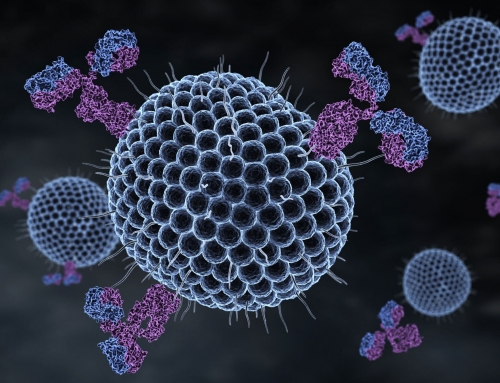Developers must consider interactions between the formulation, packaging materials and sterilization measures.
For liquid formulations that will be introduced directly into body cavities or tissues, or into the bloodstream, sterility is key to the prevention of infection. The need to maintain sterility in both the formulation and delivery system places strict constraints on the selection of pharmaceutical components, as well as on the materials and methods used in packaging, and the measures used to sterilize equipment.
Many pharma manufacturers and contract manufacturing organizations (CMOs) use blow-fill-seal (BFS) technology to ensure sterility of a formulation. This technology provides an aseptic manufacturing process, by forming, filling and sealing vessels in a single aseptic step, free from contact with workers or tools that might be contaminated.
However, the materials and sterilization measures used in BFS place certain limitations on the active pharmaceutical ingredients (APIs) and excipients that can be used in a sterile formulation, necessitating careful prototyping and preformulation studies. This article summarizes several key concerns and challenges in the development of sterile formulations for BFS.
A sterile API must be manufactured and introduced into the formulation under conditions that minimize contamination risks.

The most fundamental requirement for a sterile formulation is that all components be manufactured under conditions that control for the possibility of contamination. This sterility requirement extends from the raw materials themselves, to processing equipment such as lyophilizers and blenders, to filters and other tools used in the refining and measurement of the API.
Thus, the development of any sterile formulation must take sterile API manufacturing requirements into account. If the API can only be manufactured aseptically at high temperatures, for example, then the excipients must resist state changes or other physicochemical shifts under temperature fluctuations. By the same token, a sterile API with a highly alkaline pH will likely require a formulation with some buffering capacity.
To anticipate and avoid problematic interactions between the sterile API and the other components of the liquid formulation, the developer should conduct prototype studies, to determine the formulation’s sensitivities to fluctuations in temperature, pH, oxygen, and other potentially harmful stressors. By iterating through several rounds of formulation prototypes, the developer can select stabilizers, buffering agents, cosolvents and other excipients that preserve both the sterility and the chemical stability of the formulation.
A sterile formulation intended for BFS use must not interact undesirably with the packaging material.

Long before a sterile liquid formulation is manufactured at a clinical or commercial scale, a developer should perform compatibility studies to ensure that its chemical properties will not interact with the BFS packaging in harmful ways. While the formulation’s compatibility with intended packaging materials can be assessed via a variety of methods, the most direct and effective approach is simply to perform a small batch of formulation, and examine its interactions with a small sample of the BFS packaging material.
For example, the formulation’s solubility must not permit the sorption of organic solvents into the packing material. This can be offset by the adjustment of the formulation’s octanol-water partition coefficients, and/or by the use of preservatives with less alkaline pH. The use of a strong pH buffer system, however, is not advisable, as it may slow the formulation’s adjustment to the pH of the recipient’s body, leading to irritation.
In addition, the formulation must not be vulnerable to oxidative degradation; a particularly common risk in gas-permeable BFS packaging. This can be offset by the use of an antioxidant, and by the selection of less oxygen-permeable polymers for the BFS containers. Ethylene vinyl alcohol, for instance, serves as an effective oxygen barrier that can be obtained at reasonable cost. Some manufacturers also mitigate the risk of oxidation through the use of aluminum pouches or sleeves around the BFS package.
Sterile formulations must be resilient to the techniques used to sterilize BFS containers and equipment.

Many BFS systems are sterilized with a conventional steam autoclave, which creates aseptic conditions quickly, evenly, and at relatively low cost. Some manufacturers now use microwaves as a sterilization measure, quickly raising the temperature of the package and its contents to a precise level; while others use concentrated flashes of light to eliminate contamination. Each of these techniques presents its own advantages and disadvantages; and the sterile formulation itself must be designed in accordance with the sterilization techniques that will be applied to the BFS equipment.
Highly heat-sensitive formulations, for example, will degrade under any form of terminal sterilization that applies elevated temperatures to filled containers. Similar constraints apply for formulations with sensitivity to moisture, radiation, or light. In some cases, the use of a filler like mannitol or anhydrous lactose may help prevent chemical degradation due to water absorption.
The only way to be certain of the formulation’s performance is to conduct tests of the interactions between the formulation and the packaging materials at various temperatures, radiation conditions, and light intensities, as dictated by the intended sterilization techniques. These tests should be conducted as early as possible in the development process, and their outputs should serve as inputs for each new iteration of the formulation.
By developing their APIs, formulations, packaging systems and sterilization techniques in parallel, pharma developers can avoid costly delays due to unanticipated formulation sensitivities; particularly within the tight constraints posed by BFS systems. Developers who partner with CMOs experienced in sterile formulation development for BFS will achieve significant cost savings throughout the process, by aligning their processes for API manufacturing, excipient selection and BFS packaging materials with the target profile of every pharmaceutical product.




